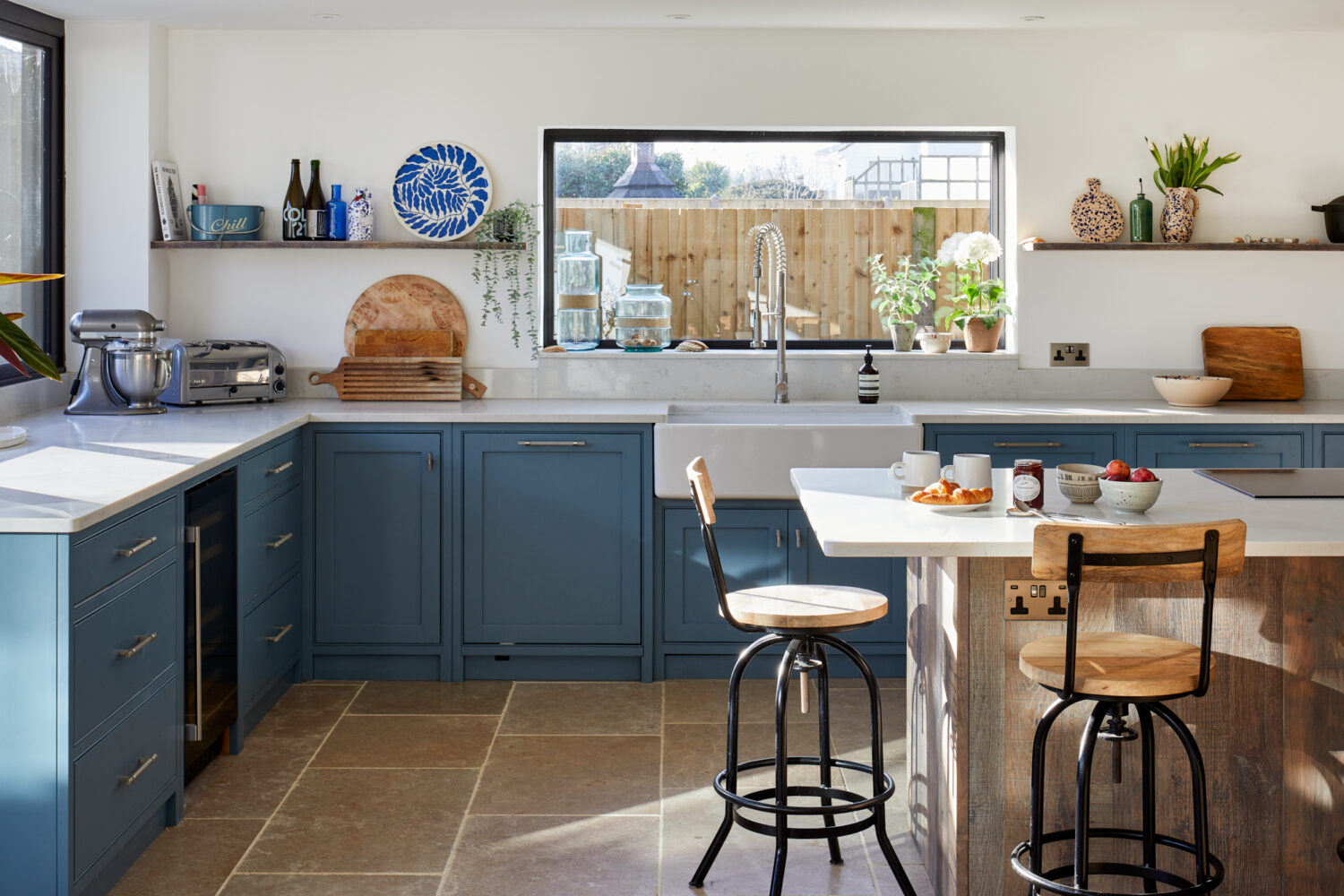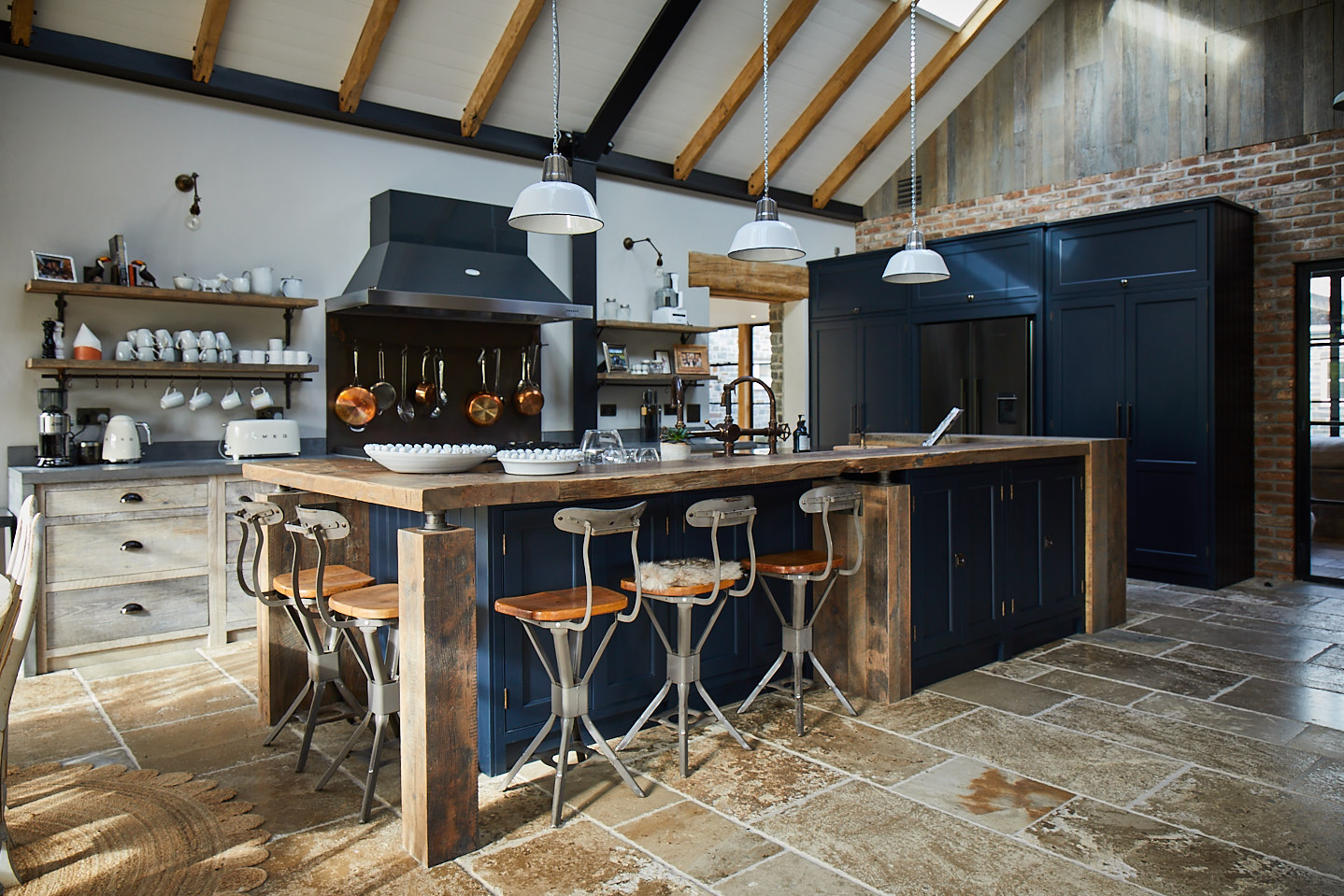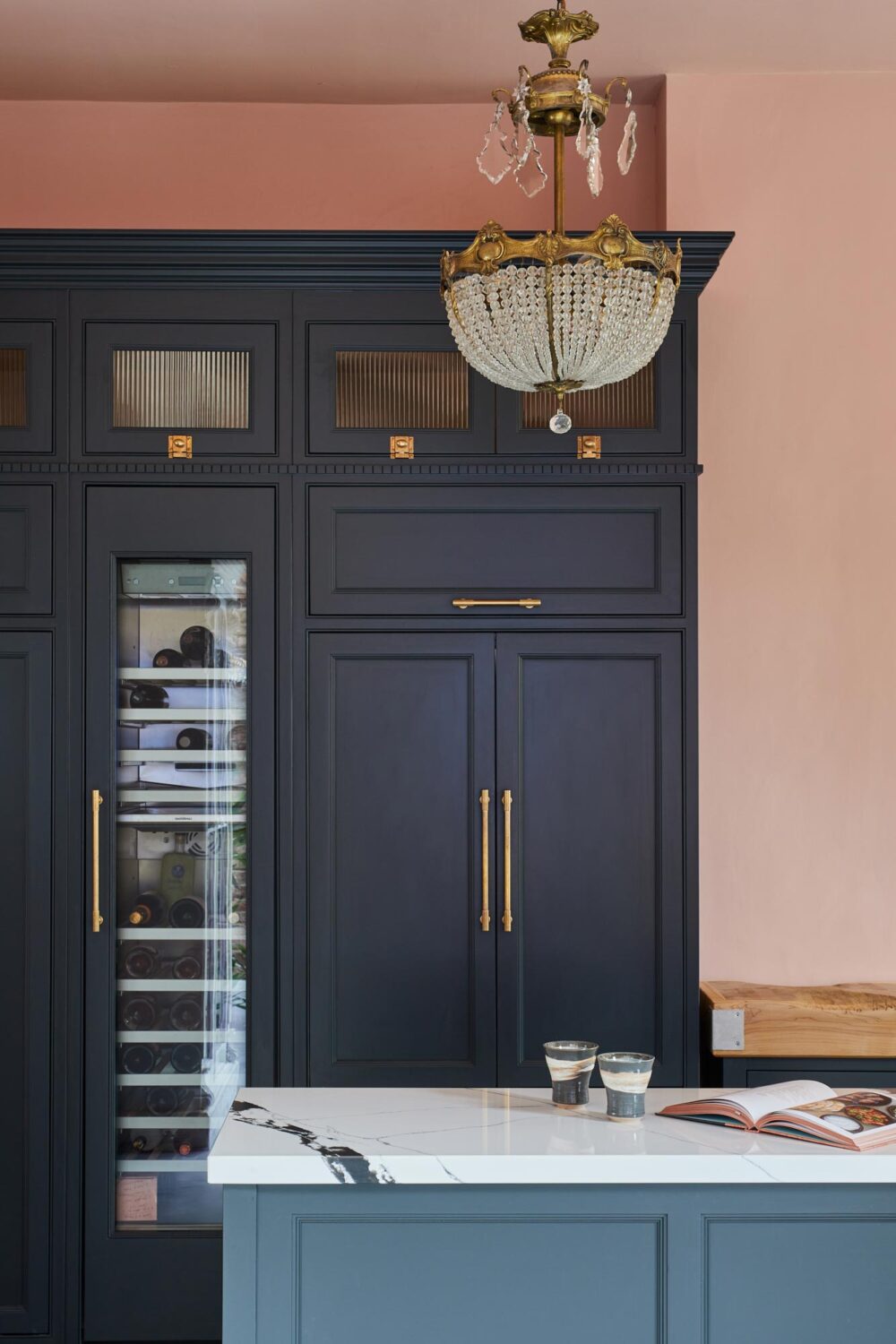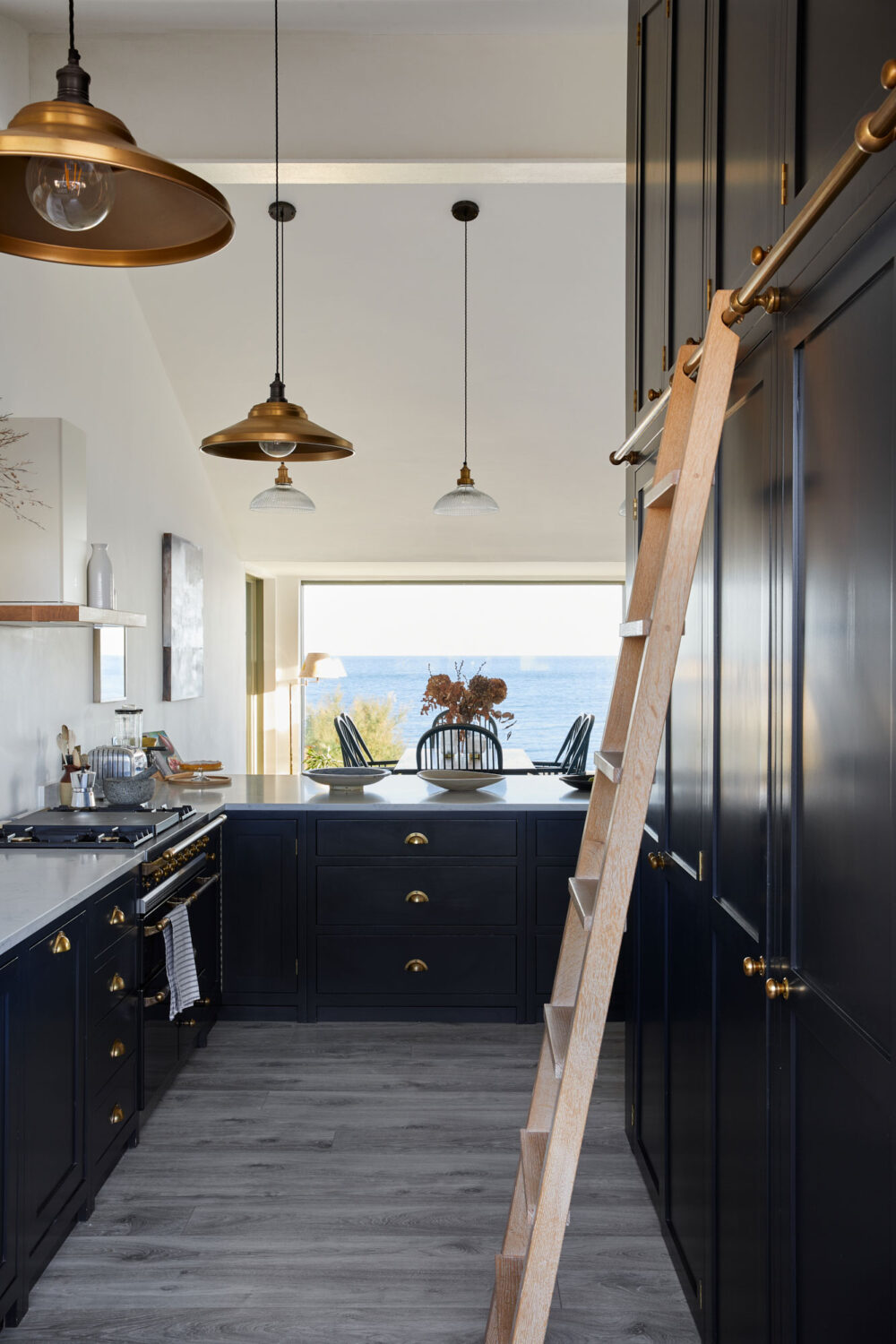
History
In recent years, the term “Shaker” for contemporary kitchens has deviated from its 19th-century simplicity. The essence of Shaker design, articulated by leader Mother Ann Lea, was to be functional, durable, and plain, with a focus on cleanliness.
The concept of simple and functional design dates back to the Roman era, as evidenced by a quote from Marcus Vitruvias Pollio: “Firmitas, utilitas, venustas,” translated as “solid, useful, and beautiful.” In the 19th century, predating the Shakers, Louis Sullivan championed the principle “Form follows function,” a sentiment echoed in the renowned Shaker style
The Shakers separated from the Quakers in 1747, initially known as the “Shaking Quakers” due to their energetic dancing at meetings. These gatherings commenced in Bolton, Manchester, and Chester. In 1774, a small group sailed from Liverpool to New York, expanding from New England into the Midwest, reaching their peak between 1820 and 1860.
Shaker Style Design
Shaker food prep areas multitasked, preserving homegrown produce, crafting medicines, and making goods for sale. American Shaker museums exhibit these kitchens, featuring individual storage cupboards against the walls.
Elegant tapered leg tables act as islands for work, and open shelves are a constant, providing instant visual storage. A notable Shaker item is the simple hanging peg, often fitted at dado height for hanging various items. Shaker kitchens were truly ‘unfitted,’ allowing most items to move, creating an uncluttered space for alternative uses. Cleaning was facilitated with easy access under most units.
Shaker Style Doors
The Shaker door, with flat panels within simple stiles, hinged within traditionally wide frames, represents the classic style born in colonial America. The design, sparingly careful, has become timeless and highly desired. Mushroom-shaped knobs, small and unpretentious, typically match the door’s wood or are painted the same color as the furniture.
Colours used in Shaker Style Kitchens
Shakers used vibrant colours such as chrome yellow, red ochre, yellow ochre, red lead, chrome green, Venetian red, and Prussian blue. It is refreshing to see these hues returning to modern kitchens.
TMC Shaker Style Kitchen Projects
Bespoke Kitchen Project 27 – Cornwall
Serviceable open shelves with crockery readily accessible

Bespoke Kitchen Project 44 – South Bank
Handy pegs for utensils and cloths, centre tables with elegant legs concealing electrical supply and offering deep drawers for ergonomic storage.

Bespoke Kitchen Project 48 – Bracklesham Bay
Tall open shelving units in larder areas, simple flat unadorned cornices, and discreet hardware collectively contribute to kitchens that are timeless, elegant, and thoroughly functional.

